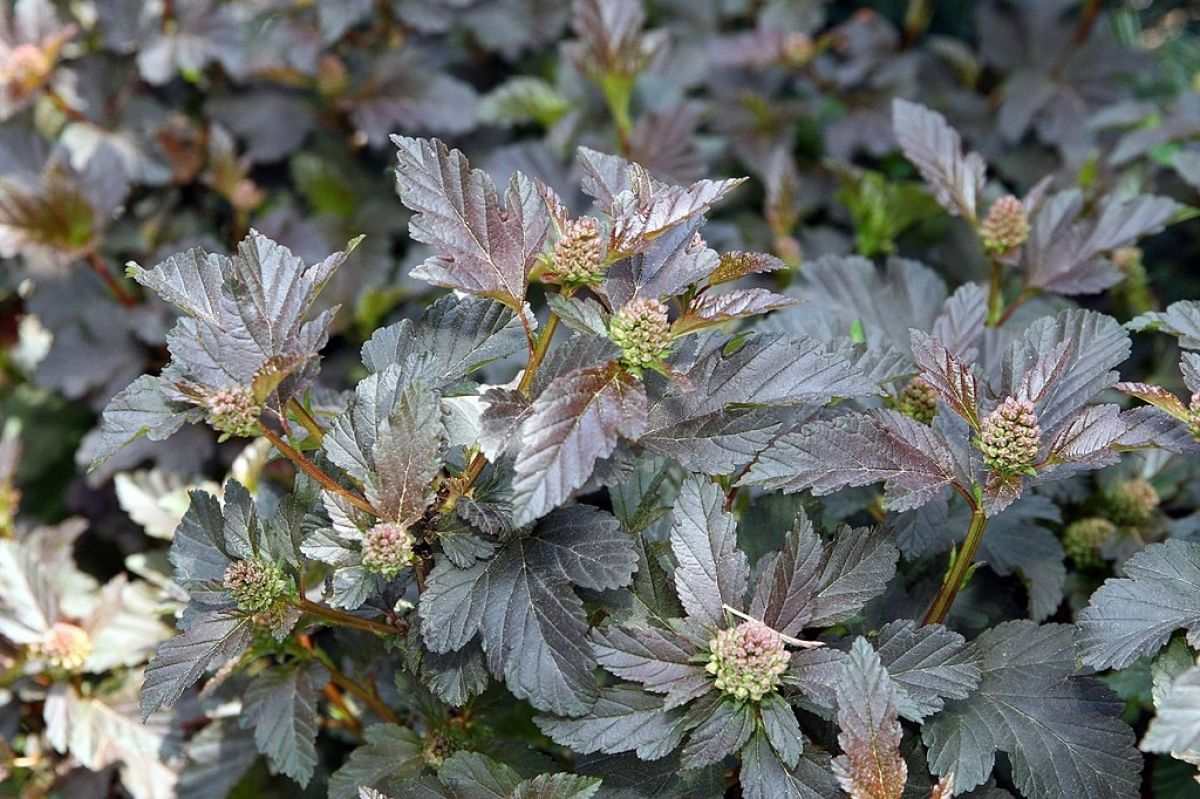
Ninebark, a.k.a. Physocarpus opulifolius 'Diabolo'. ( (David J. Stang, Wikimedia Commons))
When I began gardening, my aim was to have as many flowers as possible, but the longer I garden the more I appreciate the impact of colorful foliage.
Leaves have longer lives than flowers. They give the garden form and texture, provide beguiling backgrounds for the flowers, but also can be focal points and create eye-catching contrasts.
New varieties of shrubs and trees often provide two seasons of interest if their foliage color in the fall supplements a spring bloom. Native shrubs, such as ninebark, are now available with burgundy and chartreuse foliage as well as the original green.
There are many plants with blue-toned leaves, such as rue and baptisia, to supplement those with grey foliage such as sage, artemisia, iris, lamb's ears, lavender and rosemary.
Small shrubs and trees such as Japanese maples with lacy foliage of many hues are effective as focal points and for repetition throughout a landscape.
Lush foliage on perennials, such as heuchera, helps create the furnishing in beds and borders, and the dark green boxwoods usually act as the primary organizing element in formal garden designs.
Plants with large leaves, such as Acanthus, create sculptural elements, and variegated plants are wonderfully showy.









